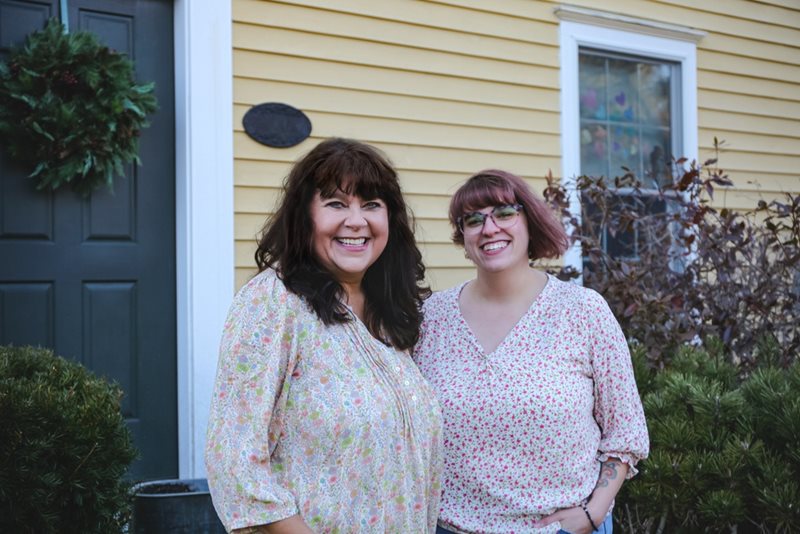
FDIC-Insured - Backed by the full faith and credit of the U.S. Government
FDIC-Insured - Backed by the full faith and credit of the U.S. Government

Credit & Debit Cards
Search
- Routing#:
- 211272630
FDIC-Insured - Backed by the full faith and credit of the U.S. Government
FDIC-Insured - Backed by the full faith and credit of the U.S. Government

Feb 1, 2022 Community News
Over the period of several months, we posted weekly interviews from Amy Northrop, a Saco Resident in End-stage Kidney Failure, on our Facebook and Instagram. Brave and unforgivingly herself, Amy opened up to us about her experiences.
Over the course of the 10-part series, she explained the process of dialysis, talked of her financial struggles, spoke on her love for giving back, gave thanks to her support circle and elaborated on her journey to peace
as she continues to search for a living kidney donor.
For more information on how you can help, visit her page at: https://bit.ly/3D2OudJ
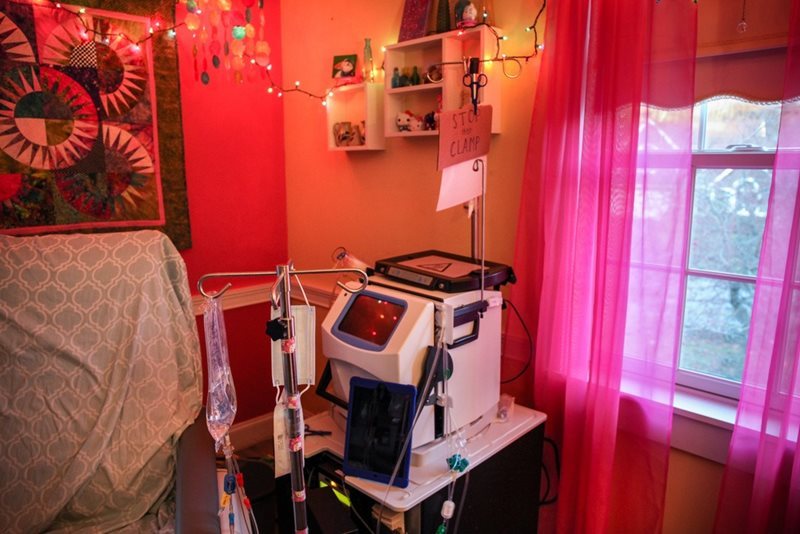
Part 1: Leading up to a Diagnosis
“I get up every day truly grateful to be alive. I’ve always been that kind of person, even now that I’m in End-stage Kidney Failure.
As a child, I had undetected Urinary tract infections and frequent issues with my ureters, the tubes urine flows through from your kidneys to your bladder.
But as I got older, things seemed to get better. I was fine through my adolescence and pregnancy with Arianna. But then, everything changed.
I used to work as a Special Education teacher, and one day I was bit by a student. Unfortunately, the student bit down so hard it left me with a crushing nerve injury and chronic pain.
I was prescribed Naprosyn, an anti-inflammatory medication for symptom relief. The doctor who prescribed it said I was fine to take the medication because it wouldn’t affect my kidneys in any way.
I took it for two years and I had relief from this pain syndrome I was coping with. But all of a sudden, my health started declining. I was later told that the medication I’d been taking may have triggered my kidney failure.
With racing thoughts, I started getting educated on the different aspects of my disease. I applied for the kidney transplant program. In March of 2016, I started Peritoneal Dialysis, which required a tube to be surgically implanted into my belly. I did this form of dialysis six days a week for 8-10 hours a night for 4 years."

Part 2: Training for Dialysis Treatment
“In December 2020, I started gaining weight at a fast pace and I would get sick every two to three days. It took a few months for people to realize that something wasn’t right.
It turns out my dialysis treatment method was failing to work properly so I had an emergency port put in my chest around April and started Hemodialysis. This form of treatment requires an artificial kidney machine to filter my blood. No longer needing the tube, it was removed in May 2020.
Arianna and I trained for six weeks with medical professionals so that we could do it at home. When we came home from training, ready to do it ourselves, we were terrified. Luckily, a nurse came to stay with us the first week, which made us feel a bit more comfortable.
Like anything new, there’s a big learning curve, but this learning curve was very scary. In the beginning, a lot of alarms would go off on the machine and we didn’t understand what they meant. There’s just so much to understand about how it all works.
During the process, we keep tabs on my health. I can even draw blood from ports and do my own labs to be sent off for analysis, instead of doing them in hospital.
It’s exhausting how frustrating it can be sometimes. I can’t tell you how many times I’ve thought about going in the center and letting them do it and not being responsible for it. But mostly, it’s just easier to not have to travel back and forth each day to the dialysis center. I feel like we’ve mastered a lot, but we still have a lot to master and learn.”

Part 3: “Am I Out of the Woods Yet?”
“In 2021, I underwent many surgeries and hospitalizations. It’s been a roller coaster of emotional uncertainty to put it lightly.
I was in a car accident on June 13 and my vehicle was totaled. The airbag came at my chest and caused swelling and inflammation around my catheter, ruining it. The lap band from my seat belt hurt my recent surgery incisions.
I had to go back in for surgery so they could put in a new catheter at the end of June. But that surgery resulted in a staph infection, so I had to get a new one put in.
When Arianna and I finally got back to doing treatment again at home, everything was going great. Then, during dialysis treatment one day in August, I became disconnected from my machine and the catheter clotted. So yet again, I had to have my catheter replaced.
With every issue that comes my way, I just keep thinking, “Oh my gosh, honestly, I just need a break. My poor, poor body.” I felt like roadkill.
I’m always left wondering, ‘Am I out of the woods yet? Can I just pause and breathe for a second?’ I feel like I can never truly relax and that’s been one of the hardest parts of this process.
Since that final surgery in August, everything has been working great and my body can finally begin to heal. I’m not laying on the road as roadkill anymore. I’m actually on the sidewalk, sitting up. I’m not standing, or running, but I’m at least sitting and catching my breath.”

Part 4: Dialysis and Fear of Missing Out
“During dialysis, I’m essentially immobile. I get hooked up to my machine and have to stay in my recliner. I have to sit in the same position connected to my machine for 3-4 hours a day, 5 times a week. A certain percentage of blood sits outside of my body during this process, so I can’t move.
For the 5 years I did Peritoneal Dialysis, I was hooked up to my machine at night, so it wasn’t a big deal for me. At night, everyone is sleeping, so I wasn’t missing out on anything.
Hemodialysis, on the other hand, happens during waking hours and it’s important that I’m alert during the process. I need to keep an eye on my machine the whole time and regularly check my blood pressure.
During the day, everything happens. Friends get together, family events happen, doctors appointments are scheduled, you name it. I don’t like having to juggle dialysis with my life. It’s heartbreaking and constantly makes me feel like I’m missing out.
It’s been hard because I only have a few close friends and it’s difficult trying to find time to get together. I’m not a big social body, but I like being able to sit and be with people who can accept my physical limitations.
I’ve always had a hard time accepting how dialysis limits me. My body won’t let me move at the pace I want it to, and that’s hard because I always want to be making moves.
I certainly haven’t fully accepted the fact that I’m not capable of living life as I used to, but I’m learning to be okay with it. I just have to keep reminding myself that I have a disease.”

Part 5: Coping with Identity Loss by Helping Others
“I came into the world knowing I wanted to help others and be a teacher. When I was around 8, I had a little classroom set-up in my playroom with a little table and chairs. I’d set up my stuffed animals and dolls and spend hours pretending to teach them.
When I was 12, I volunteered to work with special needs children and later on, with students for the Special Olympics. Before my diagnosis, I loved the work I did as a Special Education teacher and Sign Language Interpreter.
Helping others is so deeply a part of who I am that I’ve never considered anything beyond that as a purpose for my life. The fact that I had to stop working and doing things I love devastated me.
Being a teacher was my whole identity besides being a mother. I’m unable to sustain gainful employment due to my chronic illness and the ongoing intense pain and fatigue, but I do what I can to help others when I’m able.
When the pandemic first began in early 2020, I started doing meals for needy families, which gave me so much pleasure. Arianna and I drive around in the winter giving out necessities such as hats, warmers and blankets to homeless people.
I love giving back to my community, and it helps me get through being disabled. It brings me purpose that I had otherwise thought was lost with my diagnosis.”

Part 6: Wanting the Best for My Daughter
“My Arianna has been my saving grace. She was born prematurely, which created a strong closeness between us. People call us the Gilmore Girls because we finish each other's sentences and thoughts.
Of course, this closeness has made it so she wants to take care of me, but I hate that she feels responsible for my existence. She is so informed and understands so many things about my disease and dialysis. She goes above and beyond what the average caregiver would do.
On days where I’m really sick and I can't eat or interact like I normally do, she’s there to help me through it. A day or two later when I’m feeling more like myself, she always says, “I’m glad to have you back” because she’s been missing her friend.
I'm so grateful she takes care of me, but as her mother I feel I should be the one taking care of her. Every parent wants the best for their child, and I feel bad because I‘ve taken that from her. She’s not going to be able to live a normal, happy life until I get a kidney. The sooner I get my freedom back, the sooner she will too.
This has been a part of her life since she was 11. That’s when my chronic pain began and I became disabled. She became very anxious. She really struggled because her world was falling apart around her as she knew it.
The nest, the thing that keeps her safe and secure, it all unraveled and fell apart and she didn’t have that safety net there for her anymore. And as much as I tried to scoop it all up and keep holding onto some sense of normalcy, I just couldn’t do it.
More than anything, I want this kidney so that my little miracle preemie baby can go conquer the world. She wasn’t meant to be here taking care of me. She was meant to be out there making a difference and living her best life.”

Part 7: Searching for a Kidney, Finding Devastation
“We’ve had so many wonderful people come forward as living kidney donors and go through the testing process, but time and time again, the match hasn’t been close enough for the procedure to take place. There are so many hoops you have to jump through in order to receive and donate a kidney.
A kidney from a living donor is preferable, because the lifespan of a cadaver kidney is quite short comparatively. I’ve also been told it’s a disadvantage to go this route, because if people see me smiling and dressed nicely with make-up on, they might be hesitant to help because it doesn’t look like I’m dying.
But I can’t help who I am. My nana always called me Pollyanna, which means unrealistically optimistic. I’m just a silver lining gal, always trying to be someone’s sunshine.
In order to get a kidney, I’ve had to undergo a series of tests to check my physical and mental health, and met with many, many medical professionals in order to be a recipient. It’s well-known that there are certain requirements one has to meet in order to donate a kidney, but it’s lesser-known that a recipient must also meet certain requirements. For example you must have a BMI under 35, be a non-smoker and be cancer-free. Otherwise, you won’t be an eligible recipient.
My great friend Liz came forward once. She was the most genetically aligned non-family member match I had, and doctors said they’d never seen anything like it in non-familial people. Everything seemed like it was going to work. All she needed was to have her kidneys functioning at 85 percent capacity, but Liz’s were only functioning at 83.5 percent. That 1.5 percent difference was enough for her to be denied. We were crushed by it.
Then, my sister Emily, who lives in Indiana, also came forward. After lots of testing, they determined she would likely be a good match. Even though we are only half siblings, Doctor’s actually thought we were twins because we are so genetically aligned.
They flew her out to Maine in August of 2021. We went to the Maine Wildlife Park to spend time together before the surgery. I was feeling relieved and ready for my new life to begin. But then, she received a call saying the surgery had to be canceled, that it would be too complex of a surgery because they discovered my sister has four arteries in one kidney and people usually have one or two.
I went from being on top of the world to feeling depressed and devastated. How do you pick yourself up after that? All you can do is paddle onward. I don’t like that the process puts an emotional burden on those who seek to donate either. They wonder why they’ve been turned away, or think they’re broken or something is wrong with them. And that’s just not the case.
My friend Libby wanted to donate her kidney to me, but she couldn’t because we weren’t a close enough DNA match. Even though it didn’t work out for me, Libby chose to go through the paired donation process to potentially give her kidney to someone else in need.
And that gives me hope too. That maybe, someone out there who wants to donate will be matched with me. And I can finally get a kidney and live a more normal life one day.”
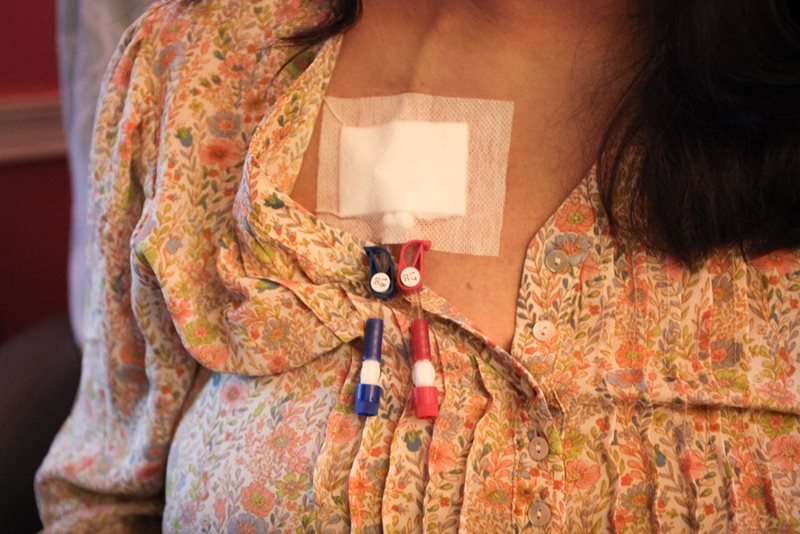
Part 8: Financial Insecurity, Limited Assistance
“I have a ton of medical debt I just can’t pay because of my treatments. A couple of times, I received a grant from the American Kidney fund. This past year, there was an issue with the dialysis center sending documents to the financial program in a timely manner.
I received Medicare because of my disability from 2006, but when the health insurance company didn’t receive their paperwork and payment from the dialysis center, they stopped helping me. This happened twice.
The first time I kept accumulating bills. The second time, I applied for some grant funding, because when I heard I didn’t have coverage, I was going to stop dialysis. And I was told I couldn’t stop because I would die.
I felt like I didn’t have a choice, that my life was out of my control. I couldn’t financially afford to live. The options were either do dialysis and be in debt for the rest of my life, or don’t do it and die. After trying to figure out how I was going to pay for everything, I was finally granted some funding, but it only covered dialysis.
For a while, I didn’t even go to the doctor for any issues because I just couldn't afford it. I only went to the dialysis center as needed. If I had a cold or other ailments not related to my kidneys, I would just try to find answers online and remedies at the grocery store.
It’s been hard, because when you’re struggling health-wise and feel you can’t afford it, your wellness gets put on the backburner all because of money. And for me not being seen regularly… Well, that really isn’t an option if I want to live.”
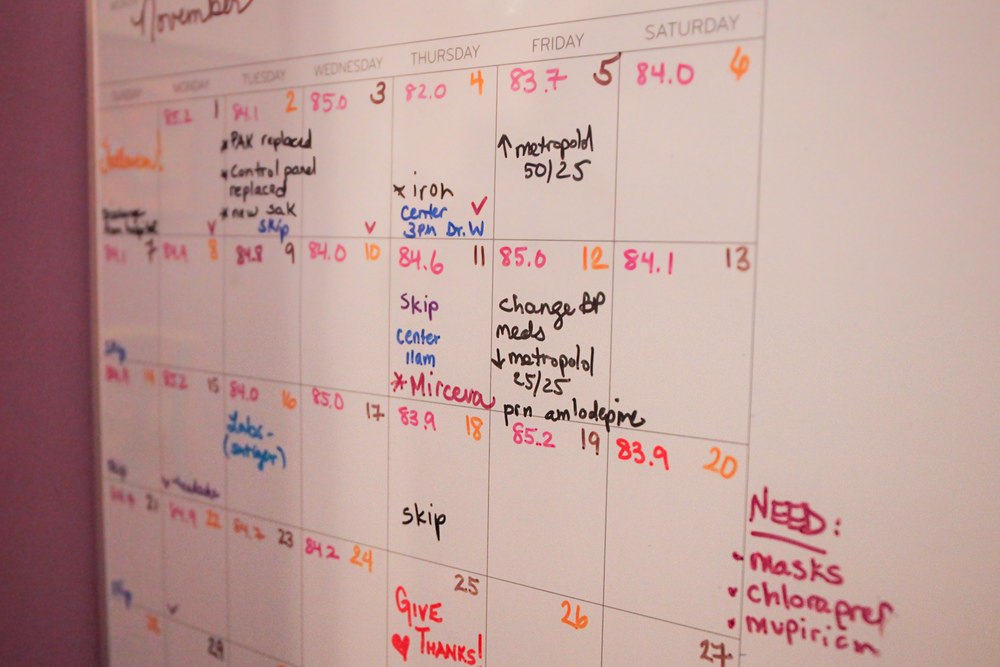
Part 9: Available, but Limited, Treatment Options
“I belong to a lot of different support groups, so I get to see first-hand a lot of the medical advancements that are being made to help those living with the disease.
Sometimes, I receive surveys about different items that may potentially, in the future, be used as treatment methods. I always try to fill them out because one day, it could be the difference between someone suffering or living a normal life.
Recently, I filled out a survey about a wearable kidney. It’s similar to an insulin pump for someone living with diabetes in that it’s a device you can wear. It’s essentially a transportable dialysis tool that would give me more freedom.
The issue, however, is that there’s a huge risk of bleeding to death. It’s hard because they need to do trial runs with this type of equipment to gather enough information for larger-scale use in the future, but until the parameters for success are higher, I’m scared to give them a go.
With over 90,000 people in the U.S. alone looking for a kidney each year, it's surprising how little treatment options are available. Only 20,000 transplants are performed each year, and 5,000 people die in the U.S. each year because they don’t get a kidney. There's such a need and only so many kidneys.
The idea of somebody being so selfless to donate a kidney to me is a lot to take on and accept. I personally don’t want to take anyone’s kidney, but I have to if I want to live.
I would take excellent care of it, and do everything to eat right and protect it and take good care of it, but sometimes things can still go wrong and my body could reject it. I won't know until it happens."
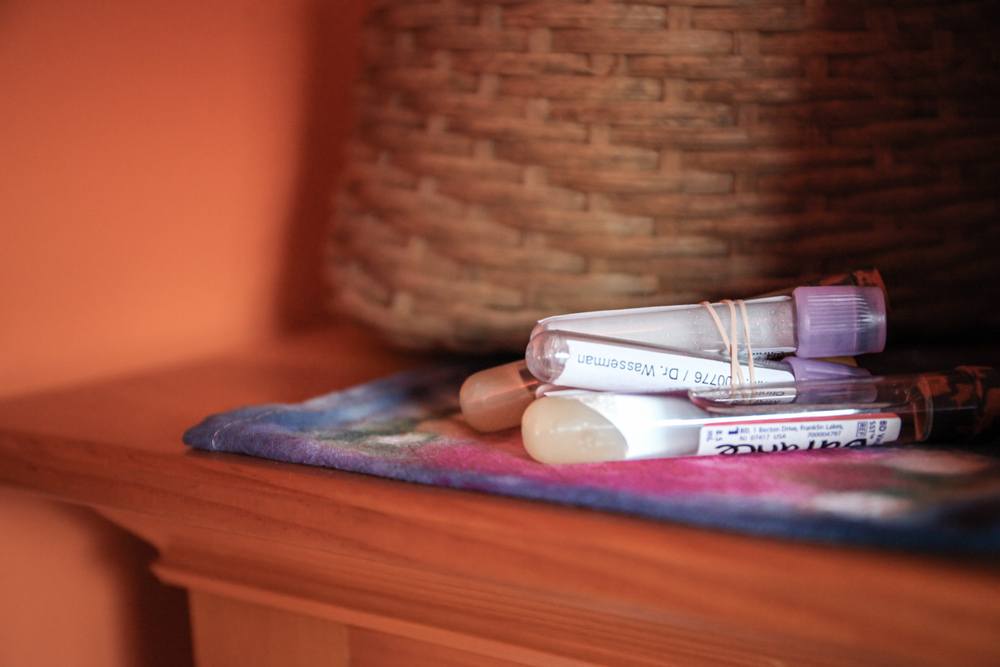
Part 10: Accepting and Adapting to Change
“A big part of living with this disease is learning to accept the things I cannot change and the aspects of my life I have no control over. Learning the art of letting go is a process because I put a lot of pressure on myself.
As a provider and caretaker, I want to be cooking meals for my family, but most of the time I have to get take-out because it’s easier. Living like this hasn't been easy. There are days when my fight to overcome is strong. And then there are days I’m so overwhelmed and feel like a failure.
As a mom, you just feel bad for not being able to care for your family. There are dirty clothes that need washing and dishes in the sink. I can’t keep on top of anything, and sometimes it just gets so overwhelming.
Recently, I attended a Living Life Well program for 8 weeks at Mercy Pain Center in an effort to become more at peace with my diagnosis. It was a huge help. It gave me validation, acknowledgement and helped me to accept my limitations.
I am one of those people that pushes themselves and suffers because of it. I want to be productive, but if I overdo it I end up bedridden for three or four days after because it exhausts me.
As humans, I feel like we only ever allow ourselves time for self-love and relaxation when we’re sick. And even though I’m technically considered sick, there are days I feel okay but I still shouldn’t push myself.
Before I took that class, I focused too much on functioning at a high level and trying to get a lot done all at once. But I’ve had to learn to get tasks done in piecemeal, to allow myself some time to recuperate and heal.
I only want to bring people sunshine, not pain. I’ve gone outside barefoot in the winter just to wave and blow kisses to my friends and family as they leave, because I want everyone I know to feel my love and I don’t know what tomorrow will bring.
There are moments where maybe I should embrace the sadness and frustration, but I’ve always felt it could be worse. I’m lucky for the things I have and the love I am surrounded by. I try to keep pushing forward with hope, because what other choice do I have? I do it not only for myself, but for the sake of my family and friends."
For more information about Amy Northrop and to see how you can help, visit her page at: https://bit.ly/3D2OudJ
